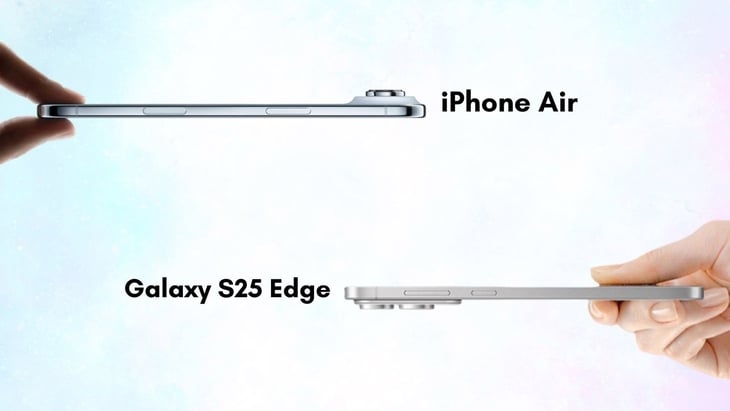
Two super-thin phone models iPhone Air and Samsung Galaxy S25 Edge promise to breathe new life into the smartphone market that has been "barren" for many years - Photo: TECHPP
Physical limitations have kept smartphone hardware relatively quiet over the past few years, leaving the spotlight to software advancements, especially artificial intelligence (AI). In that context, major companies are creating two major trends: the return of "ultra-thin" and the foldable phone race.
"Super thin" is back
On September 10, Apple attracted global attention when it launched the iPhone Air - the thinnest iPhone in history with a thickness of only 5.6mm. Before that, Samsung also introduced the Galaxy S25 Edge with a thickness of 5.8mm. The almost simultaneous appearance of products from the two "giants" made the technology world believe that the trend of super-thin phones has returned after nearly a decade of being forgotten.
Since the early days of smartphones, "thin, light" has been the standard. The 9.3mm thick iPhone 4 (2010) was considered a breakthrough, and the iPhone 6 (6.9mm) was even considered the "new standard". But in recent years, manufacturers have shifted to upgrading battery capacity, cameras and high performance. Apple and Samsung's return to the ultra-thin trend is seen as an effort to create aesthetic differentiation and refresh a saturated product line.
CEO Tim Cook described the iPhone Air at the launch event as a "design transformation" after many generations, while Samsung emphasized the simplicity of the S25 Edge.
Big brands have clear reasons to pursue “thinness”: from the feeling of holding, brand positioning to media appeal. A thin, light device that “looks good” on posters, in users’ hands and on social networks is what marketing departments need in the context of a slow upgrade cycle.
But the price to pay for a few millimeters is not small. When the body is under 6mm, manufacturers have to compromise on battery capacity. Silicon carbon battery technology has not been equipped for the ultra-thin product line. As a result, although Apple and Samsung claim to optimize the software to compensate, users can actually notice shorter battery life than previous devices of the same range. Manufacturers even have to add spare battery accessories to "beautify" the actual usage time numbers.
Besides the battery, "ultra-thin" also entails streamlining the camera cluster (smaller module, eliminating specialized lenses), reducing heat dissipation space and raising questions about mechanical durability (slim devices are easily bent, easily damaged when dropped or subjected to force).
The tech community certainly hasn't forgotten "bendgate" - the incident where the iPhone 6 was bent nearly a decade ago. Bloomberg emphasized: to have a slim design, companies are forced to sacrifice "pro" features that professional users need.
Foldable phone racetrack
While Apple chose "ultra-thin" to innovate its products, Samsung persisted with its foldable phone line. Over the past 10 years, the company has continuously improved the hinge, screen, and durability of the Galaxy Fold and Flip. The Verge commented: with each new generation, Samsung gets closer to the model of "a foldable phone as thin and light as a normal phone".
Chinese phone manufacturers are not left out. Honor Magic V2, Xiaomi MIX Fold 4 or Huawei Mate X5 have shown that thinness, performance and camera can be combined in a foldable device. Android Authority believes that this competition is creating pressure for Samsung to speed up innovation, at the same time shaping a new "folding wave" coming from Asia.
Notably, some rumors suggest that the iPhone Air is a stepping stone for Apple to "hide its cards" and wait to launch a foldable iPhone in 2026 - a turning point that could cause the foldable smartphone market to explode more strongly than ever.
Both approaches have their own challenges: ultra-thin models sacrifice battery life and some “pro” features, while foldable models face problems with price, durability, and thickness. International news agencies and technology sites such as Reuters, The Verge, and Android Authority all agree that this parallel competition will shape the appearance of smartphones in the next few years.
In the short term, ultra-thin is a powerful marketing tool, stimulating purchases among users who like "beautiful" and "light". But in the long term, sustainability depends on three factors: battery advances, the level of consumer acceptance of trade-offs, and the ability of manufacturers to integrate thin technology without sacrificing the experience. If batteries and cameras continue to be considered "sacrificial", ultra-thin will hardly become the standard for mass consumption.
Meanwhile, foldable phones are still a promising development direction. Large screens when needed, compact when put in a pocket. And the improvements that make this product line thinner will also lead to many innovations for bar-shaped smartphones. The market in the next 5 years will answer. Will users choose "thin and beautiful" or "convenient folding", and maybe both coexist, shaping the new generation of mobile devices.
The market will answer.
The 5.6mm thick iPhone Air only has a 3,149mAh battery, while the 5.8mm thick Galaxy S25 Edge has a battery of about 3,900mAh. This number is significantly lower than the "thicker" high-end smartphones such as the Ultra/Pro, which usually have battery capacities of 4,500 - 5,000mAh.
Either Apple convinces consumers that thin is more important than anything else, or Samsung and the Chinese make foldable designs the new standard. The answer will determine the future of smartphones for the next decade.
Source: https://tuoitre.vn/smartphone-buoc-vao-ky-nguyen-moi-sieu-mong-hay-gap-gon-20251020082656077.htm


![[Photo] 60th Anniversary of the Founding of the Vietnam Association of Photographic Artists](/_next/image?url=https%3A%2F%2Fvphoto.vietnam.vn%2Fthumb%2F1200x675%2Fvietnam%2Fresource%2FIMAGE%2F2025%2F12%2F05%2F1764935864512_a1-bnd-0841-9740-jpg.webp&w=3840&q=75)



![[Photo] National Assembly Chairman Tran Thanh Man attends the VinFuture 2025 Award Ceremony](/_next/image?url=https%3A%2F%2Fvphoto.vietnam.vn%2Fthumb%2F1200x675%2Fvietnam%2Fresource%2FIMAGE%2F2025%2F12%2F05%2F1764951162416_2628509768338816493-6995-jpg.webp&w=3840&q=75)

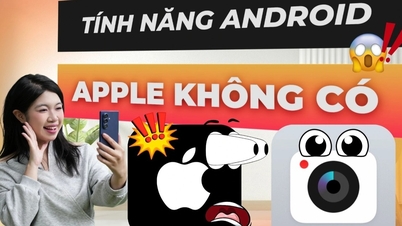



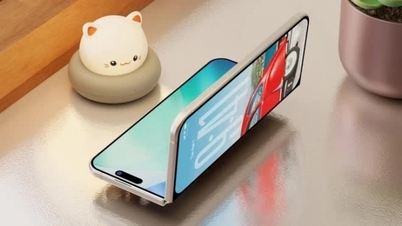

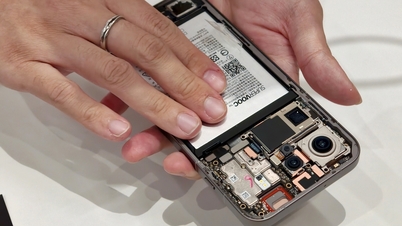
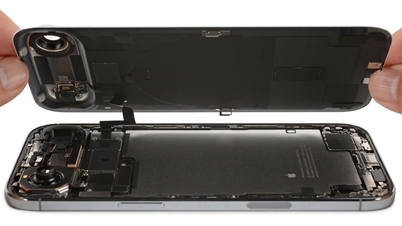
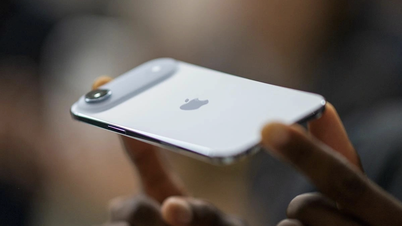


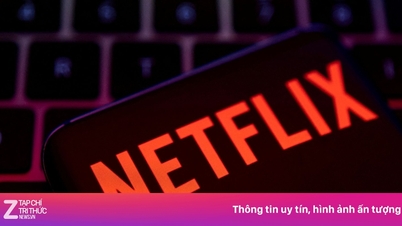


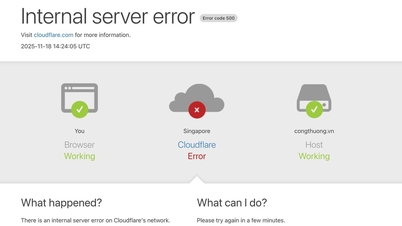
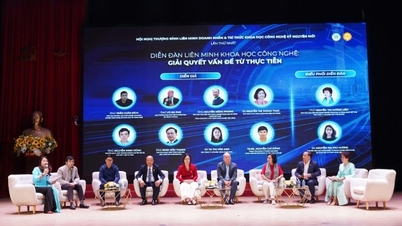







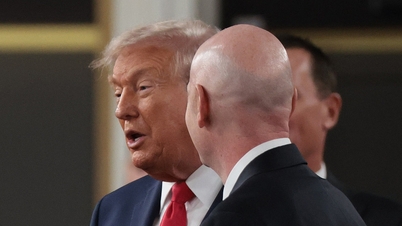
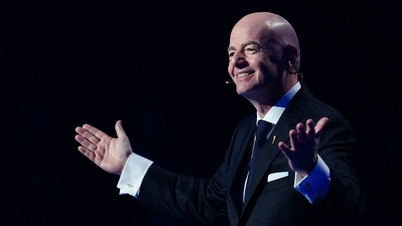



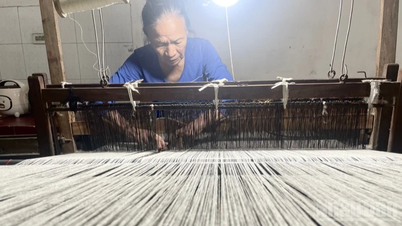




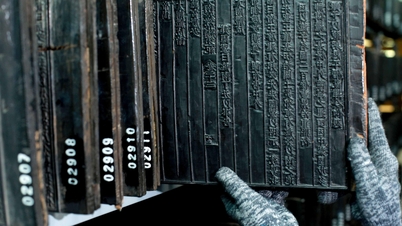







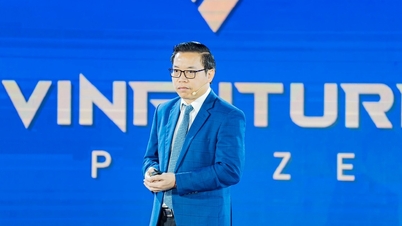
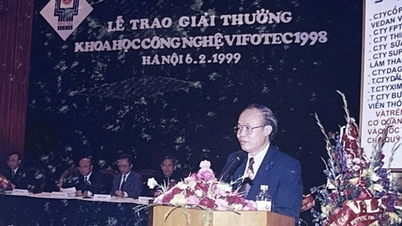




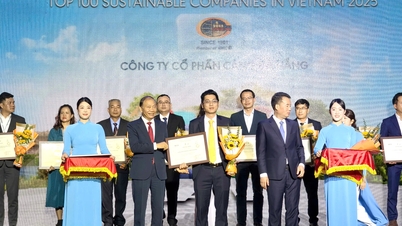
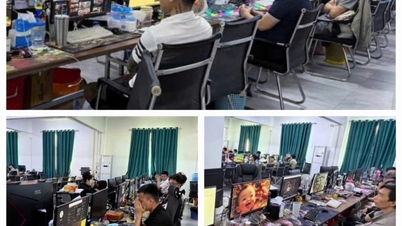
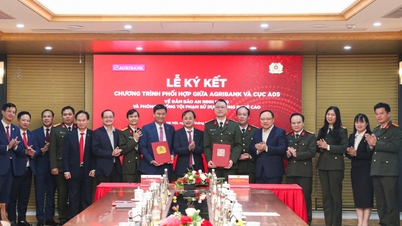


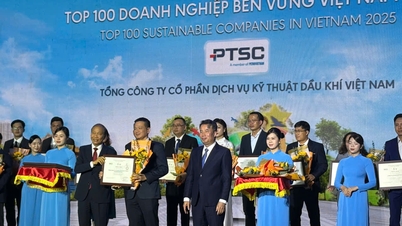







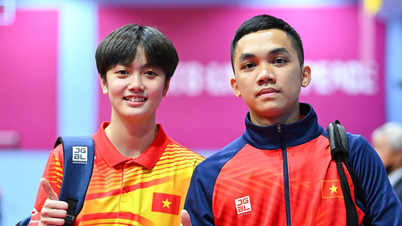



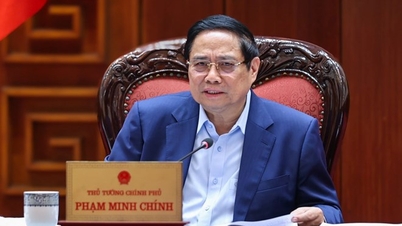
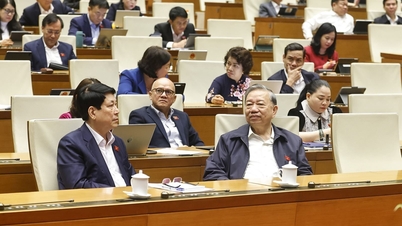
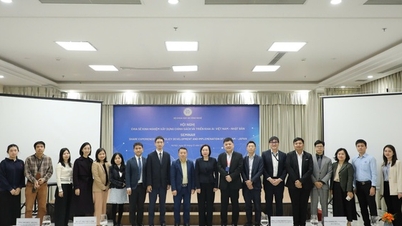
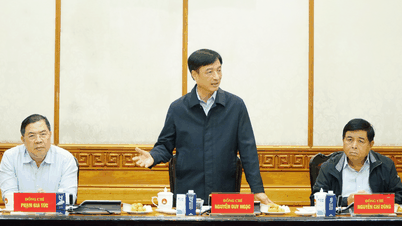



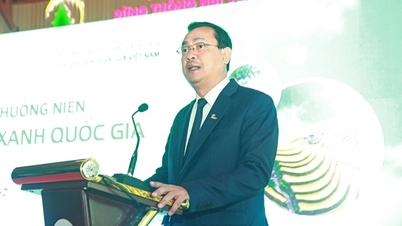
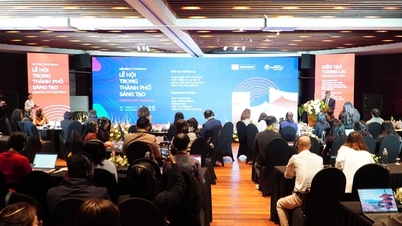






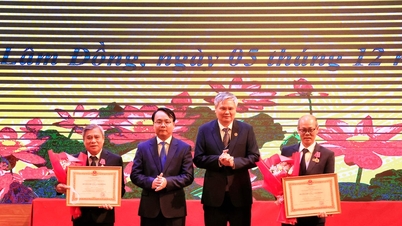



















Comment (0)